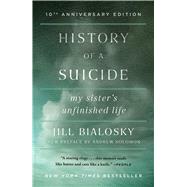
Note: Supplemental materials are not guaranteed with Rental or Used book purchases.
Purchase Benefits
What is included with this book?
The New copy of this book will include any supplemental materials advertised. Please check the title of the book to determine if it should include any access cards, study guides, lab manuals, CDs, etc.
The Used, Rental and eBook copies of this book are not guaranteed to include any supplemental materials. Typically, only the book itself is included. This is true even if the title states it includes any access cards, study guides, lab manuals, CDs, etc.
WHEN I GO TO SLEEP
These are the bare facts. On the night of April 15, into the early morning hours of April 16, 1990, Kim went out to a bar in downtown Cleveland with a few girlfriends. She was fighting with the boyfriend she had been with since she was seventeen. In her mind, he had taken on vast importance. She came home—it must have been after midnight. She parked her car, a blue Hyundai she had bought with her own money, in the driveway behind the garage. She was attached to her car. It was the first car she owned and she was proud that she managed to keep up the payments from the tips she made waitressing at a delicatessen called Jack’s. My mother was upstairs in her bedroom. I imagine she was watching television. A chronic insomniac, she used to watch television until the early hours of the morning.
Kim called her boyfriend shortly after she got home. Her best friend told me that Kim had learned he was seeing another girl. Perhaps they fought some more. (Once he’d punched her lights out and she’d ended up in the hospital. Kim broke up and got back together with him many times.) She called and told him she was going to a place far away. He told us he thought she was trying to threaten him. He thought, by “far away,” that she meant she was leaving Cleveland. Dumb fuck, I wanted to say, after he told us this, when he came to my mother’s house dressed uncomfortably in a white-collared shirt and suede blazer to pay his respects. Dark hair pushed back, face white and shattered. I wanted to kick him, but instead, because he was suffering, I opened my arms and hugged him. He took his own life five years later.
Kim must have written the note she left on the kitchen counter, taken my mother’s keys from the counter of the built-in bookcases in the living room, left the house, opened the garage door where my mother’s white Saab was parked, closed the garage door, and opened the car door. She turned on the ignition and fell asleep inside.
Here is a poem she wrote that was published in the February 1977 issue of the Sussex Scoop, her grade-school publication. She was eight years old.
When I go to sleep
I kiss my mother
I take my sheep
And tell my brother.
The cause of death was asphyxiation. The next morning, the young neighborhood boy who mowed my mother’s lawn heard the car running, exhaust fumes coming out from beneath the bottom of the garage door. I didn’t even know what Kim was wearing. I asked my mother, but no one could remember. My mother was awakened around noon that day by two police officers who broke into the house, came upstairs, and stood in front of her bed. She had taken tranquilizers that night in order to sleep.
Not long before she died, Kim worried about her black and white cat, Gretel, whom she had owned for twelve years and who was very sick. Kim had named her cat after the girl in the fairy tale, the story of the lost girl and boy whose parents abandoned them in the forest and who, afraid they would not find their way back, left a trail of bread crumbs in their wake. Here is a poem Kim wrote about Gretel when she was a child.
My Cat GretelGretel was walking down the walk when
I shouted duck Gretel!. AND HE DID.
The reason I told him to duck was
a mean old man named Mr. Simms was trying
to shoot Gretel. Mr. Simms is 82 years old.
AFTER that I took Gretel to the soda shop
and got him a double catnip soda.
While we were there I told gretel the reason
Mr. Simms tried to shoot him was that Gretel
killed his mouse by mistake. But I do not
blame gretel either. After the soda shop
we went and played going to a dance.
THEN we saw Mr. Simms and he said I am very
sorry Kids Gretel had all ready ran and hid.
I said Gretel you can come out now.
Gretel stayed very close to me he did not trust
Mr. Simms. Just to make sure I said I would
call the police. He walked away.
We went home and ate dinner. I had a bowl of
chicken soap and gretel had some cat nip stew.
Then we went to bed.
The next morning Gretel and me went to school.
On the way home a boy pulled Gretels tail
I siad thats not nice. He siad yes it is.
We ignored him, and went home.
Then we went to bed.
THE END
She had read that when cats die they go off to a secret hiding place and die alone. She thought this was so sad that every time she got home she looked for Gretel, believing that if the cat was in her sight, then she wouldn’t die. A month after Kim killed herself, my mother found Gretel curled up dead in the closet in Kim’s room.
© 2011 Jill Bialosky